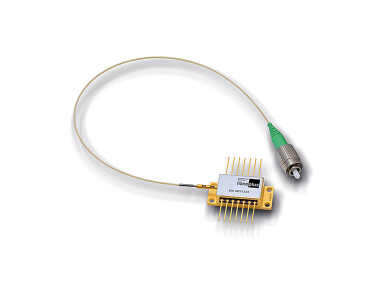Environmental Laboratory
Two AQMesh pods operating across Spain for over 6 years
Nov 12 2019
Whilst not the only AQMesh pods still in regular use since the product was commercially launched in 2013, two AQMesh pods are still in use in Spain and demonstrate the long life of this small sensor air quality monitoring system.
Over the last six years, the two pods have been loaned by AQMesh distributor in Spain, Envirodata, to a number of customers for trials and demonstrations, as well as being involved in a range of projects.
In one of these studies the pods were selected to determine how accurately small sensor systems could measure ambient levels of NO2. The collaborative research between the European Life Photoscaling Project, Tecnaire-CM, Greater Madrid Region and Madrid City Council sought to assess the effectiveness of different photocatalytic pavements in reducing levels of NO2 pollution. The AQMesh pods were co-located with two of the region’s larger air quality monitoring stations under traffic and urban background conditions to compare AQMesh readings with reference and calibrate field readings. A paper was published in August 2018 as a result of this study, which determined that with local calibration AQMesh meets the Air Quality Directive’s standards of accuracy at high concentrations of NO2.
These very first AQMesh pods have also been used to determine baseline air quality levels for the La Nucia project in Alicante, in anticipation of the development of a new sports facility. More recently, one pod has been used to evaluate levels of ozone (O3) during the hotter weather in an area within San Agustin, and the other is currently being used by the Madrid Regional Government. Previously, the municipality of Madrid used AQMesh to measure air pollution as part of a traffic reduction scheme, including to reduce speed limits and restrict access to downtown Madrid.
Luis Lombana of Envirodata comments “AQMesh technology is providing us with a unique solution to local air quality monitoring. The combination of compact hardware with advanced data processing algorithms makes AQMesh the best system for mapping city-wide pollution. We have been using these two AQMesh pods for demonstrations and projects since 2013. They have been upgraded by the manufacturer on a few occasions and we are pleased to be able to offer the best AQMesh performance to users with these two old friends. We have no plans to stop using them although we now also sell units with the additional options available, such as PM monitoring.”
The two pods were initially built to measure NO, NO2, O3, CO and SO2, powered by an internal lithium battery, which powers a ‘gas only’ pod for over two years. From 2015 the pod was able to take advantage of developments in the electrochemical sensors, particularly factory sensor characterisation introduced in 2015 (v4.0) and the ozone filter introduced to the NO2 sensor in 2016, which dramatically improved discrimination of O3 and NO2, particularly with the AQMesh proprietary data processing algorithm v4.2. The pods will now be upgraded remotely (a setting change on the AQMesh server), with full traceability, to v5.1 which offers significant improvements in accuracy at higher temperatures.
As well as the original 5-gas suite of sensors, AQMesh can now offer two additional gases – H2S and CO2 – as well as particulate matter (PM1, PM2.5 and PM10), plus noise, wind speed and direction. Other power sources are available with solar being the most popular.
AQMesh pods have been operating in the field since 2013, and so far have been active in over 60 countries in a range of air quality applications. The pods have always been built to a rugged and robust standard, with hundreds of pods installed for years in city centres around the world. The inconspicuous units generally avoid vandalism, damage or malfunction, and in one instance a customer’s pod has still continued to function and transmit data despite being crushed during an accident. They have also proven to withstand extreme weather conditions, continuing to work under several feet of snow during the North American winter and the hot desert climates in the summer months in Australia, South Africa and the Middle East.
For more information please click here.
Digital Edition
AET 28.4 Oct/Nov 2024
November 2024
Gas Detection - Go from lagging to leading: why investment in gas detection makes sense Air Monitoring - Swirl and vortex meters will aid green hydrogen production - Beyond the Stack: Emi...
View all digital editions
Events
Nov 26 2024 Paris, France
Nov 27 2024 Istanbul, Turkey
H2O Accadueo International Water Exhibition
Nov 27 2024 Bari, Italy
Biogas Convention & Trade Fair 2024
Nov 27 2024 Hanover, Germany
Dec 02 2024 London, UK









.jpg)









